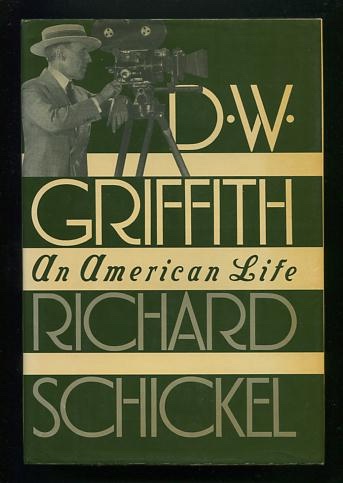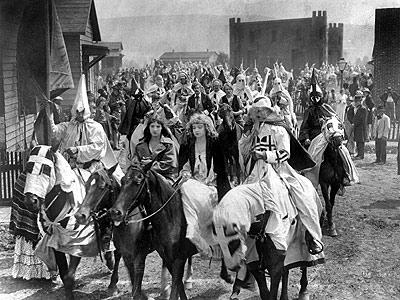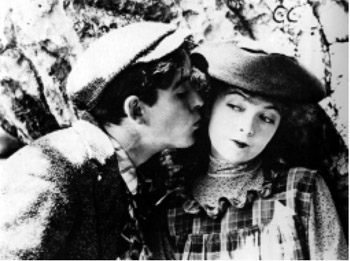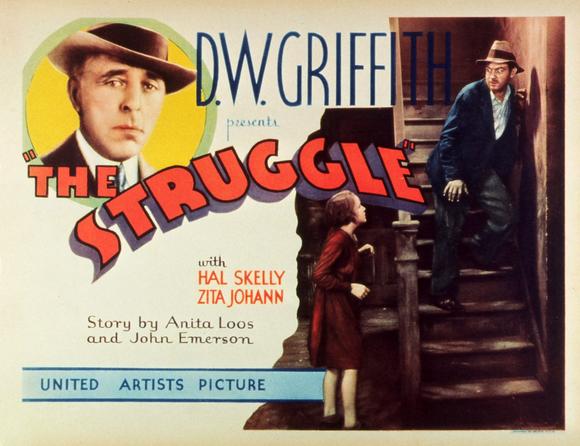From Sight and Sound (Autumn 1984). –- J.R.
D.W. GRIFFITH: An American Life
by Richard Schickel
Pavilion, £15.00
Arriving on the heels of Donald Spoto’s Hitchcock and Richard Koszarski’s Stroheim, Richard Schickel’s massive biography of Griffith manages to steer a middle course between the compulsive narrative thrust of the former and the more scholarly negotiation of diverse hypotheses pursued by the latter. Grappling with a life and personality that surprisingly proves to be no less private and elusive than Hitchcock’s, Schickel confidently leads the reader through over six hundred pages of text without ever resorting to Spoto’s questionable tactic of baiting one’s interest with the promise of scandalous revelations. And if his scholarship in certain areas raises more questions than Koszarski’s -– see the helpful remarks of Griffith scholar Tom Gunning in the June American Film, particularly about the Biograph period -– he can still be credited with plausibly ploughing his way through an avalanche of contradictory and incomplete data.
Schickel’s task is, of course, more formidable than Spoto’s or Koszarski’s, encompassing some seventy-odd years and nearly five hundred films. Earlier efforts by Barnet Bravermann and Seymour Stern to compose a Griffith biography never reached completion (although Schickel has relied heavily on Bravermann’s material). While we already possess two invaluable first-hand accounts of Griffith’s early years as a filmmaker — When the Movies Were Young by Linda Arvidson, his first wife, and Adventures with D.W. Griffith by cameraman Karl Brown — the only real predecessor to Schickel’s book is Robert M. Henderson’s D.W. Griffith: His Life and, Work (1972), which is about half as long.
For starters, Schickel’s life of Griffith marks a clear advance over his previous biographies of Walt Disney (The Disney Version) and Douglas Fairbanks (His Picture in the Papers), interesting if limited sociological forays which manage to avoid most of the hard aesthetic questions surrounding both figures, mainly using their work and careers as ‘cases’ to prop up a social thesis. Considering the dimensions of Griffith, one is surely better off without any single overriding theme or emphasis, and happily Schickel has followed this wisdom; his subtitle, appropriately, is as non-committal and open-ended as possible. On the other hand, aesthetic judgments are a good deal more plentiful, and whether or not one agrees with them, one can certainly sympathize with Schickel’s efforts to differentiate between the masterpieces, the potboilers and everything in between.
Perhaps the two most durable achievements in the book are the dissection of Griffith’s racial attitudes and their immediate consequences (particularly in relation to The Birth of a Nation) and a thoroughgoing breakdown of his financial affairs — two complex, labyrinthine matters which have all but defeated most previous commentators. In both cases, Schickel has done his homework by combing through numerous publications and company records, and has come up with many intriguing period tidbits. On the former subject, we learn that men in Ku Klux Klan robes on horses were dispatched in the New York area to promote The Birth of a Nation in 1915, and that the National Board of Censorship (which became the National Board of Review) refused to allow any black members of the NAACP to attend an advance screening after the organization mounted an elaborate protest against the film. A decade later, Griffith’s fall from fashion is memorably encapsulated by a quote from the New Yorker during its first year of publication: ‘Mr David Wark Griffith, saintly showman . . . is indisputably the grand master of moralistic-melodramatic balderdash. He has the corner on treacle, mush and trash and automatically is out of our set.’
If any serious objections to Schickel’s overall approach persist, these basically concern his and Griffith’s respective relationships to Hollywood. History, we know, is invariably written by the victors, and Hollywood has succeeded in imposing many of its norms on our general thinking about film, giving some of them the (dubious) status of natural laws. But it is important to remember that Griffith was never a Hollywood director in any normal sense of that term, even if he tried to become one, belatedly, in order to continue making films. Schickel understands this, of course; but by repeatedly casting himself in the role of Hollywood apologist, he winds up explaining away the latter part of Griffith’s career much too neatly for comfort. ‘Hollywood had yet to conceive of itself as a cultural institution,’ he notes while discussing Griffith’s virtual lack of employment during the last seventeen years of his life. ‘It still defined itself by the industrial ideal.’ As if to imply that the Hollywood of today has moved on to higher matters.
More subtly, Schickel seems infected by the Hollywood-derived notion that it is possible to know, with immediate and supreme confidence, precisely what’s ‘right’ or ‘wrong’ about every film released. This recipe notion of aesthetics, which Schickel shares with many of his New York colleagues as a weekly reviewer, rests on the expedient myth that in a business where enormous risks are taken, one can actually determine ‘scientifically’, after the fact, why certain films and careers founder. Schickel is continually alerting us to when Griffith was making the ‘right’ or ‘wrong’ creative decisions, like an agent or manager with the benefit of hindsight. Quite apart from whether one agrees with him or not (his harsh treatment of Griffith’s protracted use of Carol Dempster as a lead actress seems particularly merciless), the cumulative effect of this sort of balance-sheet analysis can only be cripplingly reductive.
A separate but perhaps not wholly unrelated problem concerns Schickel’s ungenerous and cursory treatment of the late Seymour Stern, Griffith’s official biographer for over two decades, as a ‘half-mad acolyte’. Having been acquainted with Stern in the late 60s, I can attest to the depth and passionate intelligence of his insights into Griffith, which had little to do with Schickel’s pro-industry biases. For skeptics who believe that Stern’s heated and iconoclastic polemics invalidate his work, I would recommend his exciting study of Intolerance in the Anthology Film Archives collection The Essential Cinema — an item which is regrettably absent from Schickel’s bibliography.
JONATHAN ROSENBAUM





